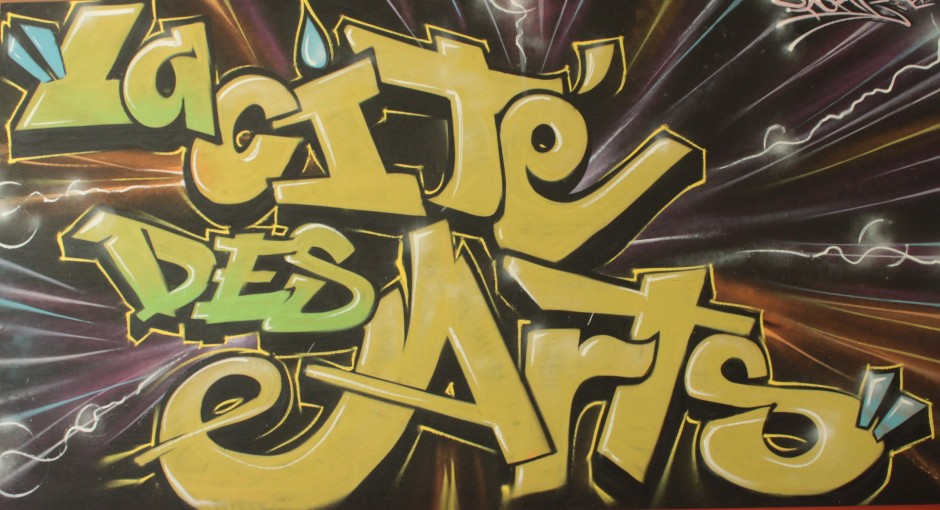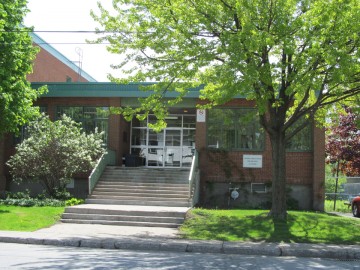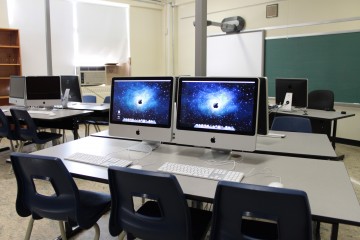La Cité des arts est un programme en éducation artistique destiné au renforcement de la motivation scolaire et à la réintégration socioprofessionnelle des clientèles de jeunes à risque des banlieues défavorisées de la Rive-Sud de Montréal au Québec. Dans le but de contextualiser et de donner un sens concret aux apprentissages, le curriculum du programme offre des cours optionnels en arts médiatiques, en arts plastiques ainsi qu’en art dramatique aux jeunes qui réintègrent une démarche de formation scolaire pour obtenir une diplomation d’études secondaires ou les équivalences nécessaires à leur admission dans un programme de formation professionnelle.
Mettant de l’avant les principes de l’approche orientante, de l’apprentissage par projet et de l’intégration pédagogique, ce programme est dirigé et enseigné par des artistes éducateurs qui oeuvrent en collaboration avec les enseignants réguliers des matières de base dans le but d’offrir une formation adaptée et individualisée à chacun des apprenants. La Cité des arts représente une initiative concrète et significative de mise en oeuvre des nouveaux principes pédagogiques prescrits par la dernière réforme éducative du gouvernement. C’est dans le but de mettre l’emphase sur la socialisation et l’éducation citoyenne de l’élève ainsi que sur le rehaussement de la qualité intellectuelle et expérientielle des apprentissages qu’un tel programme en éducation artistique a été reconnu et implanté au sein d’un milieu qui présentait des besoins à ce niveau.
*
Cité des arts is an media art education program designed to strengthen the academic motivation and to support the socio-professional reintegration of at risk youth in the disadvantaged suburbs of the Montreal South Shore in Quebec. In order to contextualize and to give concrete meaning to learnings, the program curriculum offers optional courses in media arts, visual arts as well as drama to youth returning to school with the objective of achieving an high school graduation or the equivalency required for admission in professional training programs and trade schools.
Following the pedagogical principles of orientated approach, project-based learning and cross-disciplinary teaching, this program is led and taught by art educators working in collaboration with regular core discipline teachers to offer a tailored and individualized training to each learner. Cité des arts represent a tangible and significant initiative of implementation of the new pedagogical foundational principles prescribed by the latest provincial educational reform. It is in order to emphasize socialization and civic education of the student as well as on enhancing the intellectual and experiential quality of the school projects that such a program in arts education has been recognized and implemented in an environment where the needs were acute.
The Citizens of Tomorrow and the La Cité des arts Connection
Professor Juan Carlos Castro and and doctoral student Martin Lalonde are studying and writing about La Cite des arts since early 2013.
What interests us in this particular site are its objective to use media art as a mean to foster school motivation for youth reintegrating education after dropping out of their regular secondary schooling. The student population in La Cite des arts finds itself in a transitional phase between adolescence and adulthood, between secondary education and vocational training. The teenagers and young adult attending the courses in this adult Education establishment are pressed to determine precise training objectives and a career path.
What stands out here is the fact that the administrators in charge and the school board has chosen the arts, a discipline absent from the general curriculum of Adult Education, to support student’s effort to complete their regular schooling but also to help them to engage more actively in their training in order to formulate personal interests, goals and professional aspiration. So Media Art education is understood as mean of individual and social exploration and construction. The goals of the art educators in place is not to train future professional artists, but it is to envision how media art can synthesize disparate academic training elements of those atypical students.
So the main objective of our research in this site is to identify the nature of the media art creation curricular activities and to observe how the various learning scenarios that results of this curriculum are implemented in the larger frame of the school and in the training continuum of those marginalized student clientele.
“Ce que l’expérience de la conception et de l’implantation du programme de la Cité des arts met aujourd’hui en lumière quant aux recherches sur la motivation et la réussite scolaire, c’est l’importance de la personnalisation de l’expérience artistique et de l’adaptation du modèle pédagogique au contexte local dans lequel il s’exécute. Les éducateurs du domaine des arts doivent baser leur développement sur les fondations sociales, culturelles et institutionnelles déjà en place dans les établissements qu’ils investissent. Chaque contexte présente ses défis propres quant aux enjeux reliés à l’engagement scolaire des étudiants et appelle à des moyens adaptés et particularisés afin que l’expérience artistique profite à l’émancipation du potentiel académique et social de chacun.” (Lalonde, M. (2013). Contrer le désengagement scolaire par l’enseignement des arts: perspectives de développement curriculaire auprès de jeunes décrocheurs. Canadian Art Teacher, 12(1), 20–23.)
*
“What the experience in the design and implementation of the Cite des arts program now enlightens about the research on motivation and academic achievement is the importance of customizing the artistic experience and adaptating it to the educational model of the local context in which it runs. Educators in the arts should base their development on the social, cultural and institutional foundations already in place in the institutions they invest. Each environment presents its own challenges regarding issues related to student academic engagement and calls for appropriate and particularized means so that the artistic experience benefits the emancipation of the academic and social potential of each. ” (Lalonde, M. (2013). Contrer le désengagement scolaire par l’enseignement des arts: perspectives de développement curriculaire auprès de jeunes décrocheurs. Canadian Art Teacher, 12(1), 20–23.)
Our research results has presented a lot of similarities with the other research site we are studying in Quebec. We have observed that the curriculum co-construction between educators and students is a foundational element to youth motivation in the program. Students show signs of engagement in the program and in their schooling in general when they feel a sense of agency towards the directions that are taken in class’s activities. Media art is not seen as a fixed discipline mastered by the instructor, it is seen as a research space where there is a common effort of shared issues, techniques and problematic. A proper local culture emerges from the group and subgroups constituted in the class. Artistic languages, aesthetic codes as well as technical and theoretical knowledge are co constructed based on the multiple individuals, interests, technologies, and challenges that are converging in the learning space.
In this context, the teaching authority is not necessary attributed by default to the instructor. The competency level on specific elements is the condition determining who and how are established the research directions in a project. Researches on new forms of media art practices and cultural content occupy an important part of the activities of such a group. By interacting with students from this perspectives, the pedagogical practices of the instructor is feed in a large part by student’s income in terms of object of inquiry.
A third important aspect to mention is the integration of the classes’ projects in the larger frame of the school environment. The media art projects are not emulations of what could be done with those medium, they are actual contribution the social and institutional challenges lived by the students in this context. Classes’ media art productions are bridging and connecting student’s population with internal and external community. From this perspective, Media arts are communicational means connecting various individuals and learning communities. We have observed links between arts classes and core disciplines classes, between student’s subgroups within the school, between student’s committee and external city and provincial policy makers, between the school teachers and school board personnel, etc.
For more information please visit: http://cea-1618ans.ecoles.csmv.qc.ca/ or http://vimeo.com/centre1618ans


